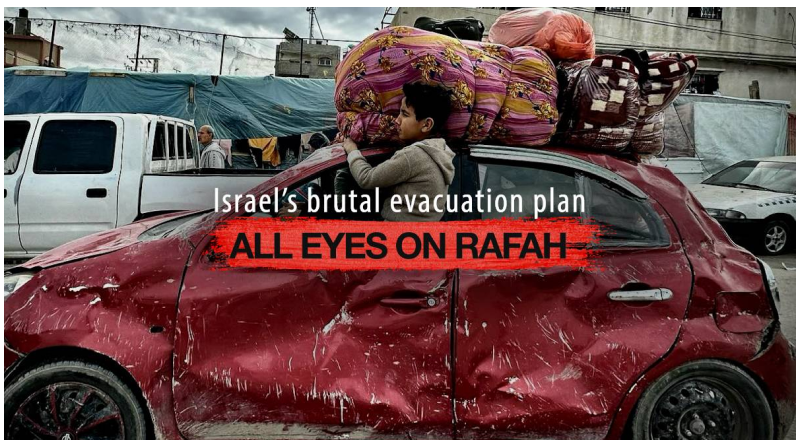The pre-war population of Rafah, situated at the southernmost tip of the Gaza Strip adjacent to Egypt’s Sinai Peninsula, stood at 170,000. However, in the aftermath of Israel’s military campaign in Gaza seven months ago, the population has swelled to approximately 1.5 million, transforming Rafah into what the Norwegian Refugee Council describes as a “gigantic refugee camp.” Many now find themselves living in makeshift shelters on streets and beaches, while others endure cramped conditions in overcrowded accommodations. The city has effectively become a “closed jail,” as remarked by a doctor who has served in Rafah, with medics struggling to provide even basic aid and mitigate the risk of disease outbreaks. According to Action Aid, the dire situation has left every individual in Gaza facing hunger, with access to only 1.5 to 2 liters of unsafe water per day for all their needs. The majority of Gaza’s population is now concentrated in Rafah, where Israel has initiated its latest offensive.
Historically, Rafah has been a focal point in the Israel-Palestine conflict due to its proximity to Egypt. Following the 1948 Arab-Israeli war, Rafah came under Egyptian control, accommodating tens of thousands of Palestinians displaced during the establishment of Israel. The city witnessed violence during the Suez Crisis, notably with the IDF raid on a refugee camp in 1956, known as the Rafah massacre. After the Six-Day War in 1967, Gaza, including Rafah, fell under direct Israeli military occupation, a status that persisted until 2005.
Amid escalating tensions, Israel’s military offensive in Rafah saw a significant influx of internally displaced Palestinians from northern Gaza following evacuation orders. Despite U.S. warnings against a full-scale invasion, Israeli Prime Minister Benjamin Netanyahu remained adamant about proceeding, facing both international pressure and domestic demands to secure the release of hostages held by Hamas. Negotiations mediated by the U.S., Egypt, and Qatar aimed to broker a ceasefire deal, with proposed phases involving prisoner releases and eventual cessation of hostilities. However, disagreements over terms, particularly regarding the release of hostages’ bodies and Hamas’s demand for a lasting ceasefire and Israeli withdrawal from Gaza, remain unresolved.
Israel’s reluctance stems from concerns over potential Hamas resurgence and security risks along the Gaza-Israel border if troops withdraw. As tensions persist, Israeli forces maintain a presence in northern and central Gaza, creating a buffer zone between Gaza and Israel. The outcome of ceasefire negotiations hangs in the balance, with critical issues yet to be resolved.
